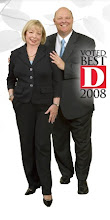
Seldom does a game or a negotiation go the way one plans. Buyers sometimes make an offer based on their emotions and needs rather than on facts and statistics. Careful assessment of the Seller’s strengths and weaknesses is time well spent. If comparable homes in the neighborhood have sold for $200.00 per square foot over the past year and a Buyer offers $150.00 per square foot, the probabilities of a successful response go down. Rely upon facts and statistics to the Seller when the property is priced too aggressively.
When you make an offer, examine the facts. Present these facts along with the offer. There are many deal points that are important in a typical negotiation. Price is only one of these points. If the other deal points are acceptable to a Seller, the price negotiation is likely to be resolved. There is always a reason your first choice is your first choice; it meets more of your needs and wants than the other homes you have seen. Thinking like a Seller when you are buying is very helpful.
When Buyers begin to make an offer, they should examine as many of the facts as they can before determining what to offer. This consideration should include the Seller’s position in the property and the price he is asking. Buyers need to review their timing needs as well as the impact that their timing would have on a Seller and the price that the Seller is willing to accept. In a typical negotiation, there are at least eight deal points that are important. Price is only one of the deal points. If all other seven deal points are acceptable to a Seller, the price issue is easier to resolve.
Don’t ignore the realities of the market in the neighborhood of the home you wish to buy. There is always a reason that your first choice is your first choice. It meets more of your needs and wants than the other homes on the list. Unrealistic negotiations most often result in disappointment for everyone. If a home meets most of your identified needs and wants, you should consider all of the deal points before making the offer. Many offers are made without due consideration of all the positions and facts.
Sonny
Sonny Moyers
The O'Dea Moyers Group
Managing Partner
(O) 972-464-4110
sonny@sonnymoyers.com




























